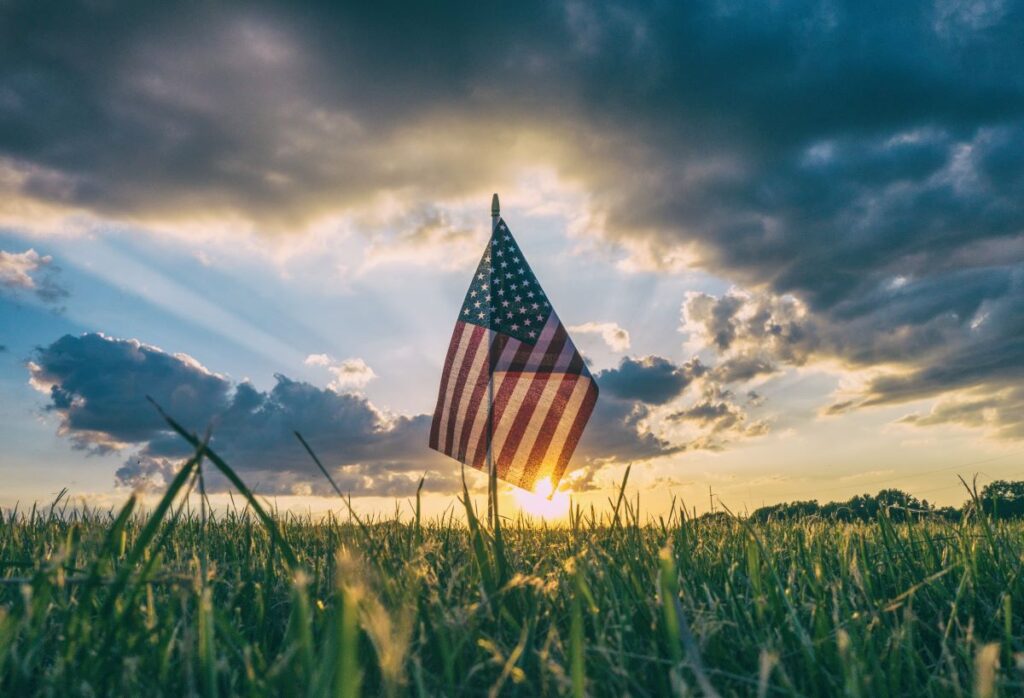
Natural disasters are extreme natural events that can cause loss of life, extreme damage to property and disrupt human activities. Examples are flooding, earthquakes or hurricanes.
Globally, disasters have increased in frequency, duration and severity over the last two decades. This increase is strongly linked to climate change, which in turn is linked to unsustainable human activity. Consequently, deep-rooted structural instability such as poverty, inequalities and displacements are affected by the increased number of natural disasters.
However, it’s the women and girls who bear the brunt of disaster-related impacts, disproportionately.
During and after disasters, there is an exacerbation of violence against women and girls (VAWG), including non-partner and intimate partner violence (IPV), rape/ sexual assault, as well as female genital mutilation, honour killings and the trafficking of women.
This systematic review aimed to synthesise and assess the qualitative and quantitative data on the impact of natural disaster exposures on the outcome of VAWG (Thurston et al, 2021).

Sadly, women and girls experience the aftermath of natural disasters such as flooding, earthquakes or hurricanes, more than males.
Methods
The authors conducted a systematic review of several databases (Medline, PubMed, Global Health, Embase and Social Policy and Practice) to identify studies published before 29 June 2021. The applied terms on the search strategies were 1) violence; 2) women and girls and 3) disasters caused by natural hazards (limited to climatological, geophysical, hydrological and meteorological hazards as defined by United Nations Office).
A manual search using Google Scholar, and a literature search of websites of organisations including the International Centre for Research on Women, International Committee of the Red Cross, Human Rights Watch, Save the Children and UNICEF, was also used to conduct the study.
The authors used adapted versions of qualitative checklist tools to assess quantitative, qualitative and mixed-method studies. Based on the assessments, studies were scored between 0 and 10.
There was no patient or public involvement in this review.
Results
37 records were included in this review, collected from 15 low-income, middle-income and high-income countries.
Overall
- 20 quantitative, 16 qualitative and 1 mixed-methods design were included
- The studies assessed exposure to disasters caused by 9 different natural hazard types, including earthquakes (40.0%), hurricanes (19.5%) and tsunamis (12.5%)
- A range of violence types were examined in relation to disaster exposure, primarily physical, psychological and sexual violence. Some studies examined femicide, controlling or aggressive behaviour, forced early marriage and financial violence.
Quantitative findings
- 8 studies found a positive association between disaster exposure and the measure of violence outcome. For example, between 2008 and 2016, heat waves in Spain were associated with increased risk of intimate partner violence (RR= 1.02; p < 0.001) and intimate partner femicide (RR= 1.40; p = 0.048). In the USA, exposure to Hurricane Katrina increased the risk of women experiencing IPV by 5-8 times
- 3 additional studies found associations between disaster exposure and Intimate Partner Violence (IPV), but no other types of VAWG
- 5 studies found no association between disaster exposure and VAWG; of which 2 studies had commented on exacerbated high rates of pre-disaster VAWG
- 3 studies did not have comparison groups and noted post-disaster prevalence of reported VAWG
- 4 studies from Bangladesh, Haiti and Japan could not determine post-disaster prevalence of VAWG without comparison groups to pre-disaster prevalence, or with different exposure status.
Qualitative findings
17 studies (16 qualitative and 1 mixed methods) showed increased VAWG after disaster exposure. Three pathways emerged:
1. Disaster exposure associated with increase of stressors that trigger VAWG
- Housing Insecurity
- Lack of security in shelter/ displacement camps led to increasing rates of sexual violence
- Loss of housing provided abusive ex-partners to re-enter survivors’ lives
- Perpetrators were intimate partners, family members, strangers, community members and authority figures.
- Economic Insecurity
- Poverty drove some women to engage in transactional sex
- Forced early marriage or labour of young girls increased due to post-disaster poverty, across South Asia.
- Trauma and Mental Health issues led to VAWG via various pathways. For instance, increased substance misuse and high alcohol intake by men struggling with poor mental health triggered IPV in post-disaster.
2. Disaster exposure associated with increase of enabling environments for VAWG
- Post-disaster environments often increased risks that enabled VAWG, such as:
- lack of privacy and security,
- increased vulnerability of women and girls to rely on abusive partners, and
- young girls forced into early marriage or labour.
- Failure of law enforcement, limited police presence and poor police conduct fostered mistrust among women and allowed for VAWG.
3. Disaster exposure associated with exacerbating underlying drivers of VAWG
- In combination with the effects of post-disaster poverty and the low status and agency of women and girls, there was an increase of forced early marriage of girls and women engaging in transactional sex.
- Rigid gender roles were key to underlying drivers of VAWG, especially IPV.
- Wives were expected to become caretakers of their disabled husbands who were no longer able to provide for the family; however, remarriage for husbands with disabled wives was perceived as normal.

Exposure to hurricane Katrina in the USA was associated with a 5-8 times greater risk of women experiencing intimate partner violence.
Conclusions
This review found that violence against women and girls is exacerbated as a result of natural disasters. The authors developed three hypothesised pathways to explain the association of increased VAWG after disaster exposure; increased stressors associated with VAWG, increased exposure to enabling environments and exacerbating the underlying drivers of VAWG.

Violence against women and girls is exacerbated as a result of natural disasters via increased stressors, increased exposure to enabling environments and exacerbated drivers of violence.
Strengths and limitations
This is the first known study to examine the associations between disasters caused by natural hazards and violence against women and girls (VAWG).
The systematic review was limited by the lack of rigorously designed and high-quality studies.
The variable disaster exposure was measured by proxy, but a few had been measured at different individual levels. Therefore, there was no standardisation to ensure consistency.
The authors highlighted limitations of the studies included in the review:
- No study used the WHO Violence Against Women measures (standardised measures in VAWG research)
- Recall bias: some studies measured VAWG several years after the exposure.
The studies included were written in English, and there are likely to be other non-English studies excluded from this review. Also, the scope of VAWG search could be expanded to include forced early marriage, sex trafficking and exploitation.

Although this was the first study to explore the relationship between natural disasters and violence against women and girls, this review is limited by the lack of rigorously designed and high-quality studies.
Implications for practice
The UN highlighted that the COVID-19 pandemic exposed the “Shadow Pandemic”- that is an epidemic of Violence against Women and Girls.
This review justifies future research which should consider including IPV and other VAWG metrics, so that international validated measures that are sensitive to disaster effects can be developed.
This review should also encourage future research to explore the complexities of VAWG with other non-natural hazards, such as war and global economic collapse.
We should embrace international studies and widen the scope of search terms for VAWG, such as forced early marriage, trafficking and sexual exploitation.
Women and children are disproportionately vulnerable to crises, further intensified under inequitable socio-economic infrastructure and driven by systemic barriers to female equality. Cameron et al. 2021, proposed that a gender analysis of environmental stressors should address both climate crisis and structural inequalities, that increases female vulnerability to insecurity.
No country is immune to the VAWG severity and lasting health implications, and rapid action is needed across policy and practice levels. Furthermore, social protection programmes to address the underlying drivers of VAWG; as well as rapid and effective co-ordination between management of disasters, law enforcement and health authorities to set out clear strategies to prevent VAWG and address the consequences.

Rapid and effective co-ordination between management of disasters, law enforcement and health authorities is needed to diminish the consequences of natural disasters on women and girls.
Statement of interests
None.
Links
Primary paper
Thurston et al. (2021) “Natural hazards, disasters and violence against women and girls: a global mixed-methods systematic review” BMJ Global Health. doi:10.1136/bmjgh-2020-004377
Other references
Cameron E, Cunningham Fiona Jean, Ray Janine, Hemingway Samantha, Jacquin Kristine. Global Crises: Gendered Vulnerabilities of Structural Inequality, Environmental Performance, and Modern Slavery. Human Arenas (2021); March 2021.
The Shadow Pandemic: Violence Against Women during COVID-19; UN Women;
Photo credits
- Photo by Dimitry B on Unsplash
- Photo by Aaron Burden on Unsplash
- Photo by Jungwoo Hong on Unsplash
- Photo by Chad Madden on Unsplash
- Photo by Michael Förtsch on Unsplash
